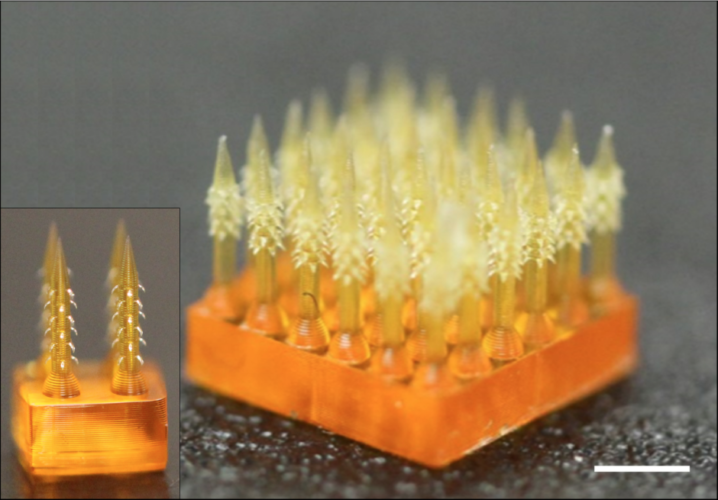
Hypodermic needles are widely used to extract blood and inject drugs, but they can be painful, cause scarring, and pose an infection risk. In contrast, microneedles are short, thin and minimally invasive. They also reduce pain and the risk of infection and are easy-to-use.
Project aims to deliver pain-free microneedle contraception
Microneedle contact lens targets the eye for drug delivery
A major drawback is their weak adhesion to tissues for controlled drug delivery, or for biosensing, which involves using a device to detect DNA, enzymes, antibodies and other health indicators.
Now, with 4D printing, engineers at Rutgers University-New Brunswick have created tiny needles that mimic parasites that attach to skin, according to a study in the journal Advanced Functional Materials. While 3D printing builds objects in layers, 4D goes further with smart materials that are programmed to change shape after printing. Time is the fourth dimension that allows materials to morph into new shapes.
“We think our 4D-printed microneedle array will allow for more robust and sustained use of minimally invasive, pain-free and easy-to-use microneedles for delivering drugs, healing wounds, biosensing and other soft tissue applications,” said senior author Howon Lee, an assistant professor in the Department of Mechanical and Aerospace Engineering in the School of Engineering at Rutgers.
In the natural world, some insects and other organisms have developed microscopic features that adhere to tissue, such as the microhooks of parasites, barbed stingers of honeybees and scaled quills of porcupines.
Inspired by these examples, Rutgers engineers developed a microneedle that interlocks with tissue when inserted, enhancing adhesion. They combined a micro 3D-printing technique and a 4D-printing approach to create backward-facing barbs on a microneedle.
Using chicken muscle tissue as a model, the researchers showed that tissue adhesion with their microneedle is 18 times stronger than with a barbless microneedle. Their creation outperformed previously reported examples, resulting in more stable and robust drug delivery, collection of bio-fluids and biosensing, the study said.




Glasgow trial explores AR cues for autonomous road safety
They've ploughed into a few vulnerable road users in the past. Making that less likely will make it spectacularly easy to stop the traffic for...